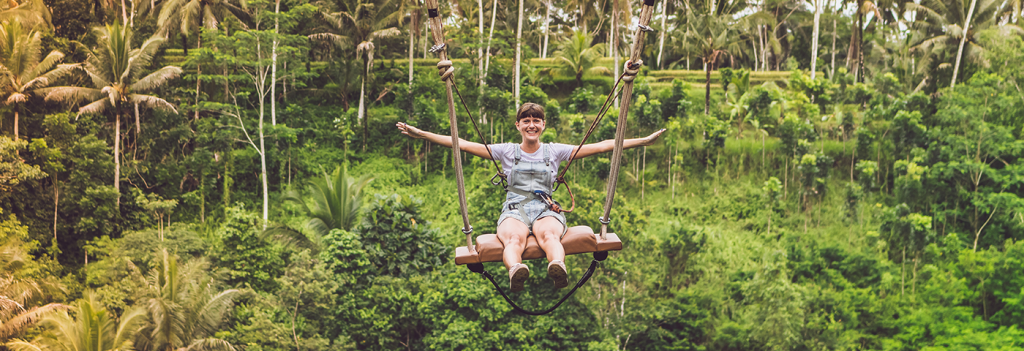What connects most of the recent high profile campaigns to make tourism more responsible? Stop riding elephants. Don’t swim with dolphins. Avoid handicrafts made from endangered species. No selfies with sloths. You mustn’t volunteer at orphanages. Fly less. They are all prohibitions. The primary emotion they work on is guilt.
Unfortunately, this isn’t the most effective way of persuading people to act in ways that are better for the rest of the planet and those we share it with. According to a new study by the Princeton Institute for International and Regional Studies called The Influence of Anticipated Pride and Guilt on Pro-Environmental Decision Making, highlighting the pride people will feel if they act in the more responsible way may be a better way to change the way they behave.
In 2014, George Marshall wrote a book called Don’t Even Think about It – Why our brains are hardwired to ignore climate change. The book explores why, despite overwhelming scientific evidence, the vast majority of us act is if climate change does not exist. According to Marshall: “Everything we see and hear about climate change triggers frames: responsibility, resistance, freedom, science, rights, pollution, consumption, waste – all our frames with their own associations.”
These frames result some rather confused situations. For example: People who vote Republicans are five times more willing to pay a two per cent climate change surcharge on an airline ticket when it is called a carbon offset than if it is called a carbon tax. Or where in an effort to reduce theft by visitors, officials at Arizona Petrified Forest National Park put up a sign stating: ‘Your heritage is being vandalized everyday by theft losses of petrified wood of 14 tons a year, mostly a small piece at a time’.
Rates of theft increased after the sign was erected, because although the sign tried to communicate the undesirability of theft, what it actually communicated far more powerfully was that stealing a small amount of wood was a perfectly normal activity.
So what should we do? How should we communicate? As is so often the case, the place to start is with the central mantra of responsible tourism, namely that is makes “better places to live and better places to visit”. That is an inspiring concept – it’s not “stop taking holidays that make the world worse”.
This is not to suggest that being all happy clappy is the way forward. We need to ground our inspiration in measurable truths. Quantify the quality we create.
Fogo Island Inn is an award-winning ecolodge on a remote island off the coast of Newfoundland, Canada. When you check out after a stay there, your bill doesn’t just tell you how much you paid; it tells you where it has gone – how much went to the staff, how much went to the local community, how much was set aside for the hotel’s social development fund. They call it ‘Economic Nutrition Labelling’ – combining transparent measurement of their activities with an innovative approach to communicating them. It’s a positive initiative, one that only works because they structure their spending commitments and supply chain relationships in a way that they would want to openly share, and one that has a feel good impact on all involved. Guests are glad to know that their money has been well spent. Staff and the local community can see that the lodge is truly committed to their wellbeing (and they’d be able to hold it to account if it was dishonest in any way).
All across the world, there are stories of community and habitat regeneration that thrive thanks to tourism. Macahua is one of six indigenous communities in Bolivia’s La Paz region that is involved in a project set up by Conservation International, whereby the community has committed to protecting nearly 55,000 hectares of forest through conservation agreements, giving up unsustainable logging and in its place setting up ecotourism initiatives.
In the Seychelles, the Nature Conservancy has negotiated a deal that converts a portion of the nation’s foreign debt into a $22-million investment in expanded marine conservation, increasing the area of its ocean waters under protection from 0.04 percent to 30 percent. As the Nature Conservancy website explains, a healthy coral reef can reduce 97 percent of a wave’s energy before it hits the shore, and just 100 meters of mangrove trees can reduce wave height by 66 percent, decreasing the impacts of major storms that are increasingly present due to climate change.
“These, and other nature-based solutions are cost-effective, self-maintaining and adaptable to sea-level rise,” writes Rob Weary, the Nature Conservancy’s senior director of product development, Naturevest. They offer other benefits to communities that traditional “grey infrastructure” solutions simply can’t, including improved water quality, fish production and new or improved ecotourism opportunities.
There are opportunities like this all across the world, where well managed sustainable tourism offers one of the best ways to finance the protection of these threatened habitats, through offering the communities that live there a source of income that involves maintaining the biodiversity on which they rely. According to a World Bank report from earlier this year, this ‘natural capital’ accounts for almost half the wealth of the world’s developing nations.
Visit the Seychelles and support their efforts to preserve their islands. Trek the Bolivian Amazon to ensure it keeps growing. Stay in a lodge where the community welcomes you because they know your visit benefits them.
Do something that makes a difference. Measure its impact. Then share the story of how tourism makes it possible.
